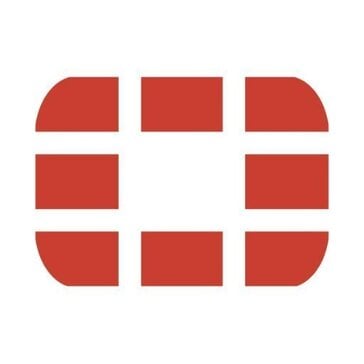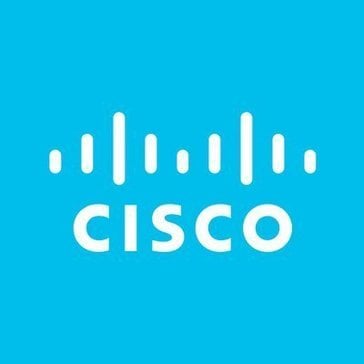Best Unified Threat Management Software
Best Unified Threat Management Software At A Glance
G2 takes pride in showing unbiased reviews on user satisfaction in our ratings and reports. We do not allow paid placements in any of our ratings, rankings, or reports. Learn about our scoring methodologies.
- Overview
- Pros and Cons
- User Satisfaction
- Seller Details
Offered via the Check Point Infinity architecture, Check Point’s NGFW includes 23 Firewall models optimized for running all threat prevention technologies simultaneously, including full SSL traffic in
- Network Security Engineer
- Network Engineer
- Information Technology and Services
- Computer & Network Security
- 45% Mid-Market
- 44% Enterprise
71,231 Twitter followers
- Overview
- Pros and Cons
- User Satisfaction
- Seller Details
FortiGate offers a network security platform, designed to deliver threat protection and performance with reduced complexity.
- Network Engineer
- IT Manager
- Information Technology and Services
- Computer & Network Security
- 66% Mid-Market
- 21% Enterprise
151,663 Twitter followers
- Overview
- Pros and Cons
- User Satisfaction
- Seller Details
Manage your entire network from a centralized dashboard.
- IT Manager
- Network Engineer
- Information Technology and Services
- Financial Services
- 63% Mid-Market
- 20% Small-Business
730,409 Twitter followers
- Overview
- Pros and Cons
- User Satisfaction
- Seller Details
For over 20 years, WatchGuard has pioneered cutting-edge cyber security technology and delivered it as easy-to-deploy and easy-to-manage solutions. Our unique approach to network security focuses on b
- IT Manager
- IT Director
- Information Technology and Services
- Computer & Network Security
- 54% Mid-Market
- 43% Small-Business
19,611 Twitter followers
- Overview
- Pros and Cons
- User Satisfaction
- Seller Details
Barracuda's Cloud Generation Firewalls redefine the role of the Firewall from a perimeter security solution to a distributed network optimization solution that scales across any number of locations an
- Information Technology and Services
- 61% Mid-Market
- 24% Small-Business
15,564 Twitter followers
- Overview
- User Satisfaction
- Seller Details
The industry's first threat-focused next-generation firewall (NGFW).
- Information Technology and Services
- 46% Enterprise
- 43% Mid-Market
730,409 Twitter followers
- Overview
- Pros and Cons
- User Satisfaction
- Seller Details
SonicWall real-time breach detection and prevention solutions protect more than one million networks worldwide
- Network Engineer
- IT Manager
- Information Technology and Services
- Computer & Network Security
- 62% Mid-Market
- 29% Small-Business
29,686 Twitter followers
- Overview
- User Satisfaction
- Seller Details
Huawei Enterprise is a leading global ICT solutions provider.
- Information Technology and Services
- 80% Mid-Market
- 13% Enterprise
417,127 Twitter followers
- Overview
- User Satisfaction
- Seller Details
The global network of highly skilled researchers and analysts, protecting businesses from known and emerging malware - viruses, rootkits and spyware.
- Information Technology and Services
- Computer & Network Security
- 60% Mid-Market
- 25% Small-Business
36,878 Twitter followers
- Overview
- Pros and Cons
- User Satisfaction
- Seller Details
Our security solution provides fine-grained access comtrol that identifies, mitigates, and fully reports on the sophisticated security threats of the moment
- Information Technology and Services
- 43% Enterprise
- 40% Mid-Market
105,247 Twitter followers
- Overview
- User Satisfaction
- Seller Details
threatER is the leading preemptive cybersecurity platform for building and maintaining trust at scale. Our SaaS solution continuously learns from all available data, allowing you to gain better insigh
- 62% Mid-Market
- 27% Enterprise
- Overview
- User Satisfaction
- Seller Details
Check Point Capsule is one seamless solution that addresses all your mobile security needs. Capsule protects your mobile devices from threats, provides a secure business environment for mobile device
- Information Technology and Services
- 48% Enterprise
- 29% Mid-Market
71,231 Twitter followers
- Overview
- Pros and Cons
- User Satisfaction
- Seller Details
State-of-the-art server security with an all-in-one platform BitNinja offers an advanced server security solution with a proactive and unified system designed to effectively defend against a wide ran
- Information Technology and Services
- Internet
- 88% Small-Business
- 8% Mid-Market
1,096 Twitter followers
- Overview
- User Satisfaction
- Seller Details
GajShield's extensive portfolio of Next Generation Firewall (NGFW) Appliances provides complete visibility into various threats and performance inhibitors allowing organisation to make informed and pr
- 73% Mid-Market
- 18% Small-Business
192 Twitter followers
- Overview
- Pros and Cons
- User Satisfaction
- Seller Details
Check Point Harmony Connect redefines SASE by making it easy to access corporate applications, SaaS and the internet for any user or branch, from any device, without compromising on security. Built to
- Information Technology and Services
- 43% Small-Business
- 30% Mid-Market
71,231 Twitter followers
Learn More About Unified Threat Management Software
What is Unified Threat Management (UTM) Software?
Unified threat management (UTM) software provides multiple security features combined into a single device within a network. UTM enables an organization to consolidate IT security services into one device, simplifying the protection of the network.
What are the Common Features of Unified Threat Management (UTM) Software?
A UTM system usually includes the following:
Antivirus protection: Antivirus software prevents and detects the presence of malicious software within an endpoint device. These tools typically contain detection features for identifying potential malware and computer viruses that attempt to penetrate a device.
Malware analysis: Malware analysis tools isolate and investigate malware as it is detected on a company’s IT resources, endpoints, and applications. They detect malware and move infected resources to an isolated environment.
Email protection: Email anti-spam software prevents malicious content from being delivered via email. These tools scan email messages, content, and attachments for potential threats and then filter or block suspicious messages from being delivered.
Website security: Website security software is designed to protect business websites from several internet-based threats. These tools combine features of distributed denial of service DDoS protection software, content delivery networks (CDN), and web application firewalls (WAF) to create an all-encompassing website protection solution.
Endpoint protection: Endpoint management software tracks devices in a system and ensures software is secure and up to date. Typical features of endpoint management products are asset management, patch management, and compliance evaluation.
Vulnerability management: UTM software usually includes vulnerability management software, such as risk-based vulnerability management, which identifies and prioritizes vulnerabilities based on customizable risk factors.
What are the Benefits of Unified Threat Management (UTM) Software?
There are several benefits to using UTM software.
Flexibility: UTM software allows users to possess flexible solutions by offering a variety of security technologies from which an organization can pick and choose what is most beneficial. They can also acquire a single licensing model with all the solutions included.
Centralized management: The UTM framework consolidates multiple security components under one management console. This makes the system easier to monitor and allows its operators to examine specific components that may need attention for specific functions.
Cost savings: The centralized framework reduces the number of devices that are needed, as well as the number of staff that were previously required to manage multiple devices.
Who Uses Unified Threat Management (UTM) Software?
IT and cybersecurity staff: These workers use UTM software to securely monitor data and network traffic.
Industries: Organizations in all industries, especially technology, professional, and financial services, seek UTM solutions to consolidate security solutions for more efficiency and cost savings.
Challenges with Unified Threat Management (UTM) Software?
There are some challenges IT teams can encounter with UTM systems.
Single point of failure: Combining all these security components into one system that allows IT to manage everything in one dashboard also presents a potential single point of failure. A whole network could be completely exposed if the UTM system fails.
Loss of granularity: Components within UTM software may not have as granular or robust as dedicated solutions, which may mean degraded performance.
How to Buy Unified Threat Management (UTM) Software
Requirements Gathering (RFI/RFP) for Unified Threat Management (UTM) Software
If an organization is just starting and looking to purchase UTM software, G2 can help.
The manual work necessary in security and compliance causes multiple pain points. If the company is large and has a lot of networks, data, or devices in its organization, it may need to shop for scalable UTM solutions. Users should think about the pain points in security to help create a checklist of criteria. Additionally, the buyer must determine the number of employees who will need to use this software and if they currently have the skills to administer it.
Taking a holistic overview of the business and identifying pain points can help the team springboard into creating a checklist of criteria. The checklist serves as a detailed guide that includes both necessary and nice-to-have features, including budget features, number of users, integrations, security staff skills, cloud or on-premises solutions, and more.
Depending on the deployment scope, producing an RFI, a one-page list with bullet points describing what is needed from UTM software, might be helpful.
Compare Unified Threat Management (UTM) Software Products
Create a long list
Vendor evaluations are essential to the software buying process, from meeting the business functionality needs to implementation. For ease of comparison, after all demos are complete, it helps to prepare a consistent list of questions regarding specific needs and concerns to ask each vendor.
Create a short list
From the long list of vendors, it is helpful to narrow down the list of vendors and come up with a shorter list of contenders, preferably no more than three to five. With this list, businesses can produce a matrix to compare the features and pricing of the various solutions.
Conduct demos
To ensure the comparison is comprehensive, the user should demo each solution on the short list with the same use cases. This allows the business to evaluate like for like and see how each vendor stacks up against the competition.
Selection of Unified Threat Management (UTM) Software
Choose a selection team
Before getting started, creating a winning team that will work together throughout the process, from identifying pain points to implementation, is crucial. The selection team should consist of organization members with the right interest, skills, and time to participate.
A good starting point is to aim for three to five people who fill roles such as main decision maker, project manager, process owner, system owner, or staffing subject matter expert, as well as a technical lead, head administrator, or security administrator. The vendor selection team may be smaller in smaller companies, with fewer participants multitasking and taking on more responsibilities.
Compare notes
The selection team should compare notes, facts, and figures noted during the process, such as costs, security capabilities, and alert and incident response times.
Negotiation
Just because something is written on a company’s pricing page does not mean it's final. It is crucial to open up a conversation regarding pricing and licensing. For example, the vendor may be willing to give a discount for multi-year contracts or for recommending the product to others.
Final decision
After this stage, and before going all in, it is recommended to roll out a test run or pilot program to test adoption with a small sample size of users. If the tool is well used and well received, the buyer can be confident that the selection was correct. If not, it might be time to go back to the drawing board.
What Does Unified Threat Management (UTM) Software Cost?
UTM is considered a long-term investment. This means there must be a careful evaluation of vendors, and the software should be tailored to each organization's specific requirements. Once UTM software is purchased, deployed, and integrated into an organization’s security system, the cost could be high, so the evaluation stage of selecting the right tool is crucial.
The notion of rip-and-replace cost can be high. The chosen UTM vendor should continue to provide support for the platform with flexibility and open integration. Pricing can be pay-as-you-go, and costs may also vary depending if unified threat management is self-managed or fully managed.
Return on Investment (ROI)
As organizations consider recouping the money spent on the software, it is critical to understand the costs that will be saved in terms of efficiency. In the long run, the investment must be worth preventing downtime, loss of revenue, and any reputation damage that a security breach would cause.







